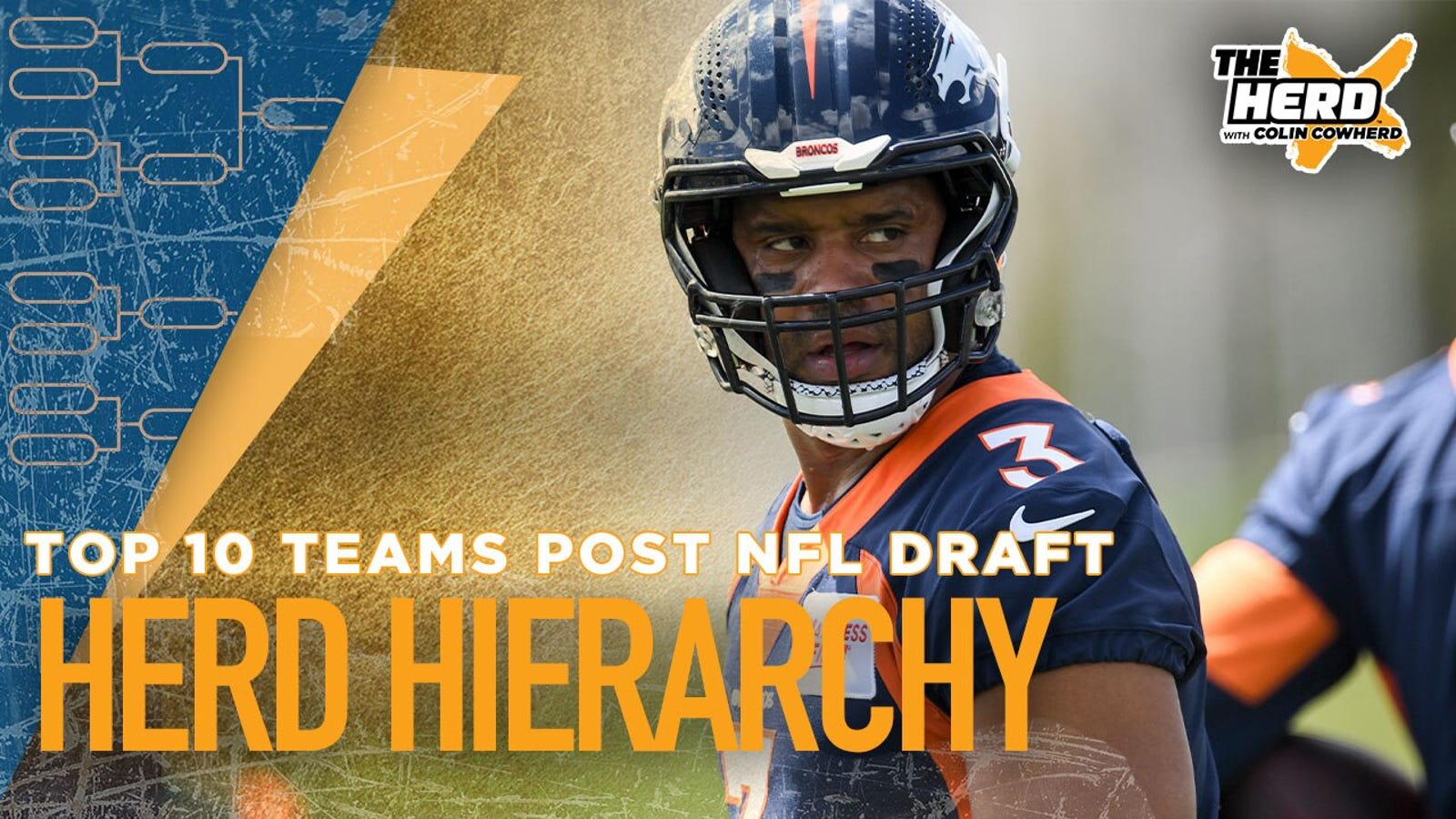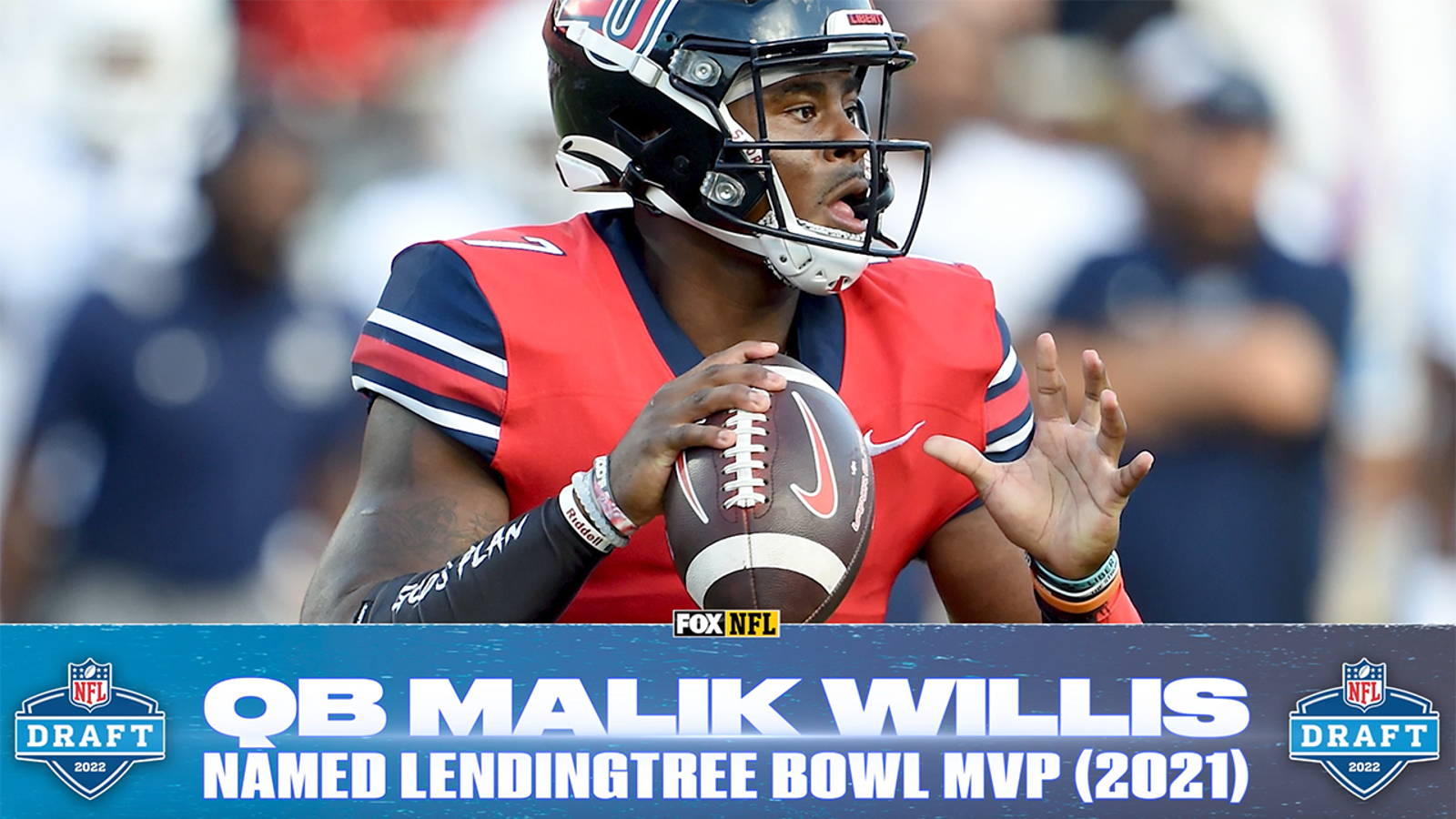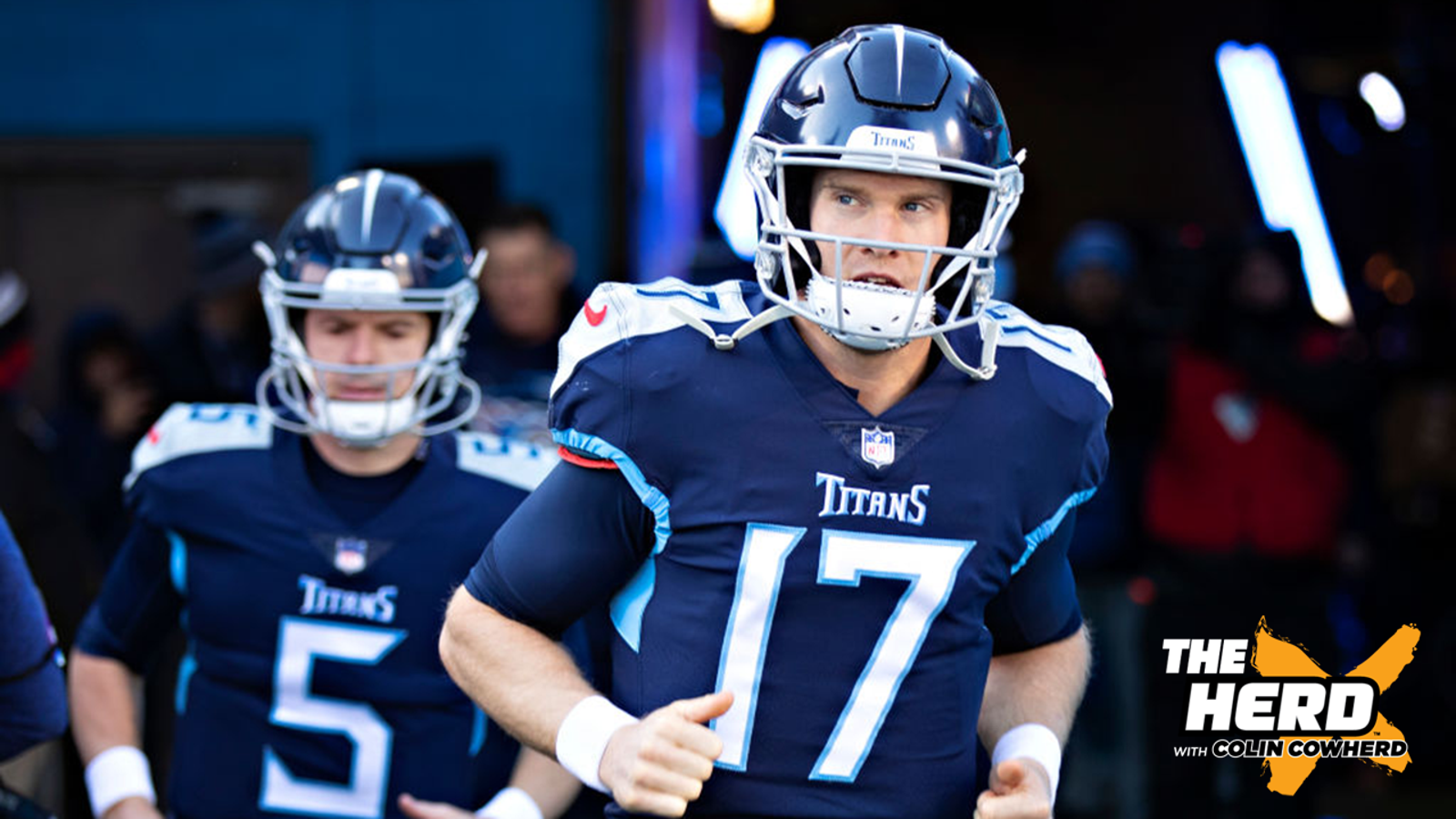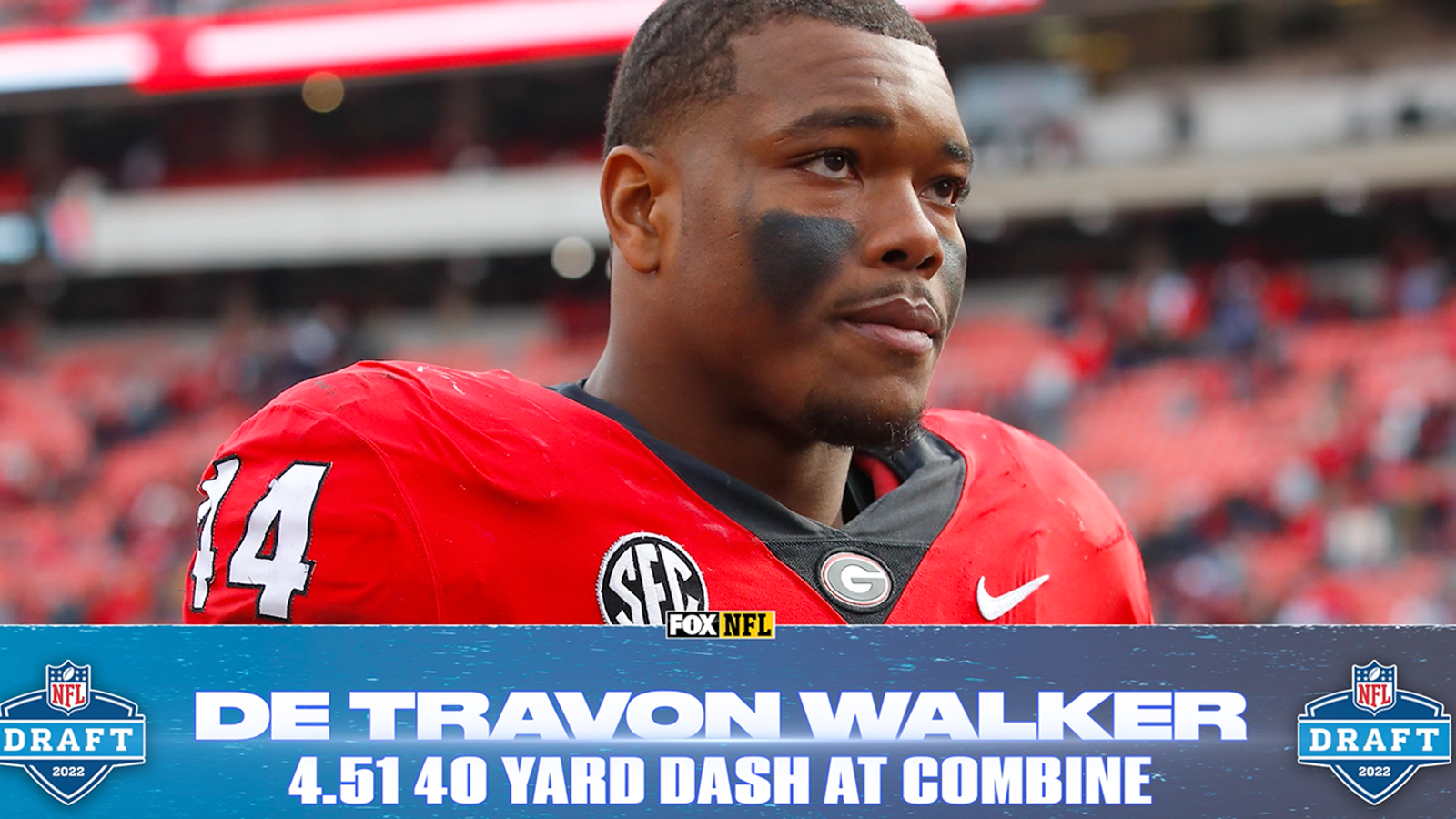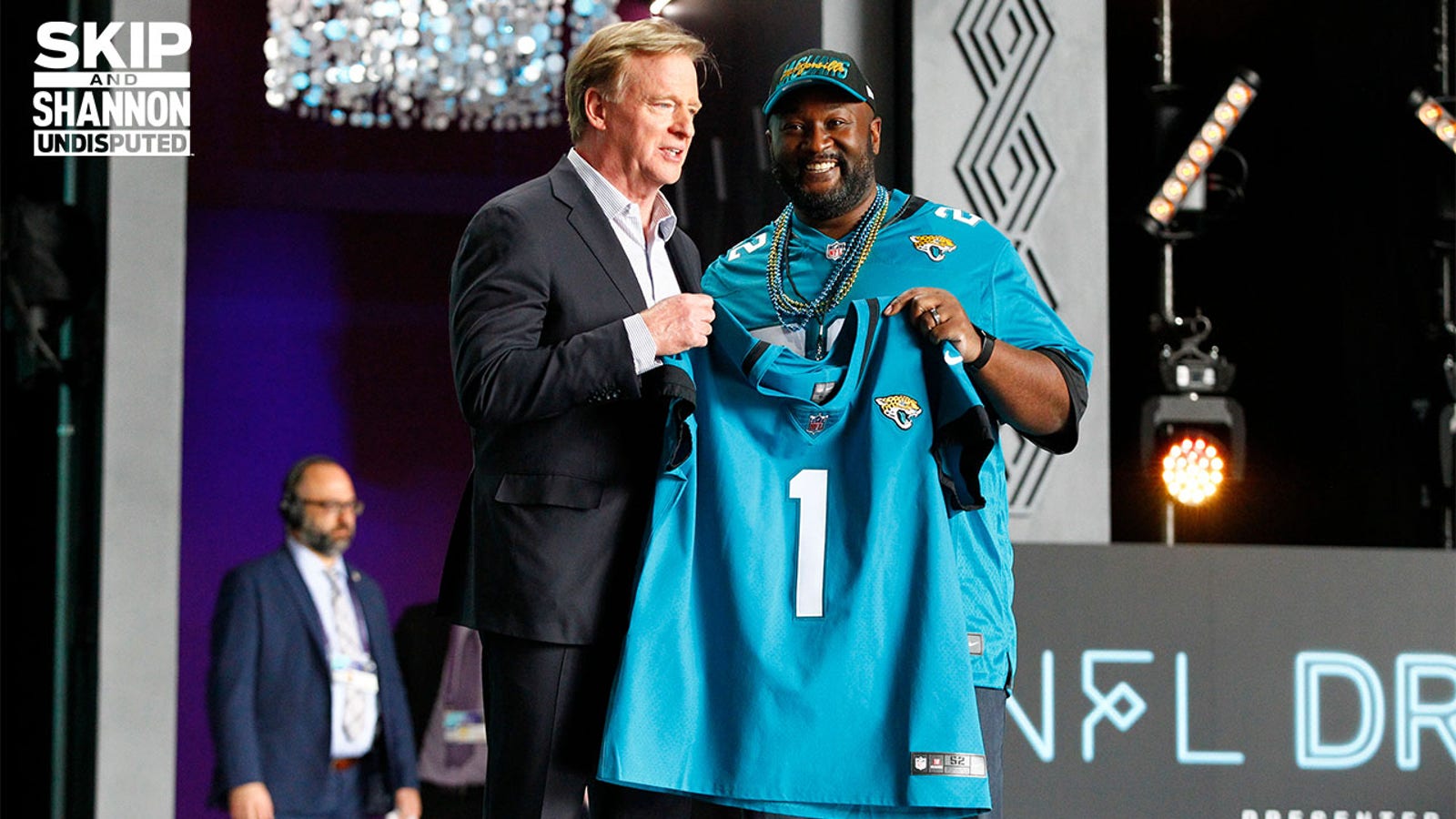
2022 NFL Draft Grades: Texans, Titans earn best AFC South marks
By Rob Rang
FOX Sports NFL Draft Analyst
My series of report cards for the 2022 NFL Draft concludes with an evaluation of the AFC South.
You can check out my grades for the other divisions here:
- NFC South: Falcons earn top mark
- AFC North: Ravens top division with elite class
- NFC North: Packers reload with division's top class
- AFC West: Chiefs use extra picks to nab top class
- NFC West: Seahawks emerge with best 2022 crop
- AFC East: Jets leave rest of division in their wake
- NFC East: Eagles soar to top of the class
Colin Cowherd's top 10 teams after the NFL Draft
Let's break down the draft classes and undrafted free-agent signings of the four teams in the AFC South.
Houston Texans
Grade: A
While there is a boom-or-bust element to the Texans’ draft, it ranks as one of my favorite classes this year. The top picks are potential Pro Bowlers, and perhaps no other team acquired as many potential day one starters as the Texans did.
Critics of Houston's draft will likely focus on what the club did not add, rather than the bevy of stars general manager Nick Caserio and head coach Lovie Smith brought in, but I believe that is faulty logic. Sure, from an outside perspective, it might appear that Houston needed help at quarterback and edge rusher, but QB Davis Mills flashed as a rookie a year ago, and the early selections of versatile and battle-tested offensive lineman Kenyon Green (Texas A&M) and wideout John Metchie (Alabama) should allow Mills to grow in year two.
What's more, few know better than Smith that boosting a pass rush can be accomplished in multiple ways. That includes adding an exceptional cover-corner such as Derek Stingley at No. 3 overall and a safety with legitimate cover skills of his own in former Baylor star Jalen Pitre, whose knack for making plays behind the line of scrimmage has earned plenty of comparisons to Pro Bowlers Jamal Adams and Tyrann Mathieu.
Given Stingley's struggles with durability since his dominant freshman season at LSU two years ago, his selection is not without risk. But in much the same way that I believed the sheer talent of Ja’Marr Chase, Penei Sewell and Micah Parsons would ultimately shine through in the NFL, despite their sitting out the 2020 college football season, I am convinced that Stingley is going to be a superstar in the league. Cornerbacks with his ease of motion, body control, sticky hands and awareness of the football do not come around often. I think Stingley is a future interception king in the NFL, and I would not be the least bit surprised if he shows off that game-changing ability as a rookie.
I was also higher than most on Green, whose stock might have fluctuated on some draft boards because the Aggies moved him up and down the line in his career. But I see a day one standout at guard who is athletic enough to slide over to tackle, if required. Wherever Green lines up, I believe his presence will take a lot of pressure off of Houston’s talented but inconsistent tackles, Laremy Tunsil and Tytus Howard.
Perhaps the selection I am most intrigued by is former Alabama linebacker Christian Harris, whose athleticism warranted a much higher selection than No. 75 overall. Like the Texans’ tackles, Harris has struggled with consistency at times. Both in terms of scheme fit and personality, however, I love Harris working with Smith. The same is true with the bulldozer of a running back that Harris will be competing against in practice, former Florida and Senior Bowl standout Dameon Pierce, a sixth potential rookie starter from this class.
Fellow Day Three picks Thomas Booker (Stanford), Teagan Quitoriano (Oregon State) and Austin Deculus (LSU) are more likely to serve as role players than future starters, but each is capable of making this young roster. Houston also nabbed some quality talent in UDFA safety Kolby Harvell-Peele (Oklahoma State), offensive lineman Myron Cunningham (Arkansas), defensive lineman Damion Daniels (Nebraska) and one of Smith’s former producers at Illinois, linebacker Jake Hansen.
Tennessee Titans
Grade: A
While the trade of star wideout A.J. Brown during the first round was a shot to the chin for Titans fans, general manager Jon Robinson counter-punched so well in the seven rounds of the draft that I think this team is actually better off now. That's quite a statement, given Brown’s undeniable ability and the fact that Tennessee earned the AFC’s No. 1 seed last season.
They don’t hand out rings for playoff seedings, however, and by swapping Brown for a similarly built and talented fellow All-SEC pick in Treylon Burks (at a fraction of the cost), the Titans recovered nicely at receiver — at least on paper. It's the rest of this class that really resonates, however, with the Titans adding a scrappy, instinctive cornerback in Roger McCreary at No. 35 overall and a future starter on the offensive line in Nicholas Petit-Frere a round later.
Of course, the selection that those in Tennessee — including Ryan Tannehill — are talking about most is the club’s fourth pick, which was used on Liberty quarterback Malik Willis.
2022 NFL Draft: Breaking down QB Malik Willis
I love the fit of Willis and Tennessee for all sorts of reasons. First, with an established passer such as Tannehill in place ahead of him, Willis will get the time needed to acclimate to the speed of the NFL. Tannehill, in fact, entered the NFL as quite a raw passer after spending the early portion of his college career at Texas A&M playing wide receiver.
Further, the Titans' offense is simpler than most in the league, with much of it based on the dynamic downhill running of Derrick Henry and the deep play-action shots that are the natural byproduct of it. While Willis will need time to learn the scheme, his ability as a runner could allow the Titans to sprinkle in some plays with him immediately.
How Ryan Tannehill should've answered the mentoring Malik Willis question
The Titans would have earned one of my top grades if their draft had ended right there, but I love the talent they added the rest of the way as well. To be clear, no one is the second coming of Henry — he’s a unicorn and a damn powerful one at that — but Michigan RB Hassan Haskins was shockingly underrated by NFL teams. Haskins offers a terrific blend of power, timing and explosiveness to leap over defenders and the ball security (zero fumbles in college) to serve as a rather princely complement to King Henry.
UCLA’s Kyle Philips was one of this year’s best slot receivers, and I see shades of former Tennessee tight ends in Chigoziem Okonkwo, one of my favorite Day Three fits from this class. It takes guts to be great, and I thought the Titans showed a great deal of guts, as well as a keen eye for talent, in this draft.
Jacksonville Jaguars
Grade: B+
The decision to go against conventional wisdom and select Travon Walker instead of the more polished Aidan Hutchinson at No. 1 overall will forever dictate how this Jaguars draft class is viewed. That is not to suggest that Walker was a bad pick, though my choice would have been Hutchinson. Walker was one of eight "blue chip" prospects in this class, and his combination of size, power, athleticism and motor could help Jacksonville reverse the losing culture seemingly ingrained in the organization.
There is no question that Walker, Hutchinson and fellow top-five selection Kayvon Thibodeaux were ideal schematic matches for a club already boasting a star edge rusher in Josh Allen. Walker and Allen should instantly give the Jaguars' defense teeth. Walker is among the favorites to win Defensive Rookie of the Year honors and might possess greater upside than Hutchinson, warranting in some eyes the bold decision by general manager Trent Baalke and new coach Doug Pederson.
2022 NFL Draft: No. 1 overall pick Travon Walker
While the decision at No. 1 overall reportedly caused plenty of debate inside the Jaguars’ facility, the club had a relatively easy decision with Utah linebacker Devin Lloyd inexplicably available at No. 27, prompting a second bold move by Baalke. Jacksonville shipped three picks to Tampa Bay to move up six spots to land the plug-and-play linebacker. Given the Jaguars' turnover at this position and Lloyd’s undeniable production and dependability, I love the decision. Don't be surprised if Lloyd becomes the most impactful rookie from this Jaguars class.
The defensive duo might be joined in Jacksonville’s immediate starting lineup by center Luke Fortner, who fills another key position of concern for the club and who, as a three-year starter at Kentucky, is about as pro-ready as it gets.
Former Wyoming linebacker Chad Muma will be making a much bigger jump in competition, but his instincts, range and size — as well as Jacksonville’s need at linebacker — could make him a fourth rookie starter from this class.
What is Travon Walker's NFL ceiling with Jaguars?
Jacksonville’s Day Three selections are mostly depth players. Ole Miss running back Snoop Conner is the most talented of the bunch but faces an uphill battle for playing time, with fellow young runners Josh Robinson and Travis Etienne ahead of him on the depth chart.
The Jaguars also brought in several undrafted free agents who I believe are legitimate NFL talents capable of earning a roster spot. While Trevor Lawrence is obviously QB1, Brown’s E.J. Perry flashed at the East-West Shrine Bowl and NFL Combine, making him one of my favorite sleepers of the draft. I’m also intrigued by the raw talent of former Notre Dame wideout Kevin Austin Jr. and Utah offensive lineman Nick Ford, though both need to clean up the sloppy mistakes that pushed them out of the draft.
Indianapolis Colts
Grade: C
This draft class represents a seismic shift in philosophy for the Colts as they build around superstar running back Jonathan Taylor and veteran quarterback Matt Ryan.
Even with the Colts boasting a quality big receiver in Michael Pittman, general manager Chris Ballard elected to double down in the draft, making Cincinnati’s Alec Pierce the club’s top pick at No. 53, followed by a similar double dip at tight end, bringing in Virginia’s Jelani Woods after re-signing Mo Allie-Cox in free agency.
Neither Pierce nor Woods plays as fast as they timed in workouts, but each possesses the size, body control and sticky hands to serve as a quality security blanket for the still-quite-accurate Ryan. The longtime Falcons QB might have a career resurrection operating out of play-action with a talent such as Taylor forcing opposing defenses to focus on run defense.
Of course, protecting Ryan — never exactly fleet of foot and slower now at 36 years old — had to be a top priority for Ballard and coach Frank Reich. I was surprised the Colts did not focus on this position a little earlier, but Indianapolis might have read the draft beautifully, nabbing a tackle some saw as a potential first-round talent in Central Michigan’s Bernhard Raimann at No. 77 overall.
Short arms and still-developing instincts had Raimann ranked 76th on my Big Board. I have reservations about his ability to protect Ryan’s blindside, which keeps veteran Matt Pryor (acquired via trade a year ago) as the Colts’ expected top option there in 2022.
My favorite picks by the Colts came in the middle rounds, including toolsy safety Nick Cross out of Maryland and riser Eric Johnson, an agile defensive tackle out of Missouri State.
The Colts then signed one of the larger UDFA classes in the league. My two favorite prospects play running back, arguably Indianapolis’ strongest positional group. Washington State’s shifty Max Borghi and Oregon’s Sherman tank of a runner, CJ Verdell, make the Colts' backfield a true stable. I also like the decision-making of former Notre Dame (and Wisconsin) quarterback Jack Coan and the underrated, pro-ready game offered by Nebraska linebacker JoJo Domann.
This is a class that offered more safety than sizzle, like the acquisition of Ryan, and there isn’t necessarily anything wrong with that. The Colts added some quality players, but I don’t see the athletic upside from this bunch that I see with the rest of the draft classes in the AFC South.
One of the most recognized names in the industry, Rob Rang has been covering the NFL Draft for more than 20 years, with work at FOX, Sports Illustrated, CBSSports.com, USA Today, Yahoo, NFL.com and NFLDraftScout.com, among others.

